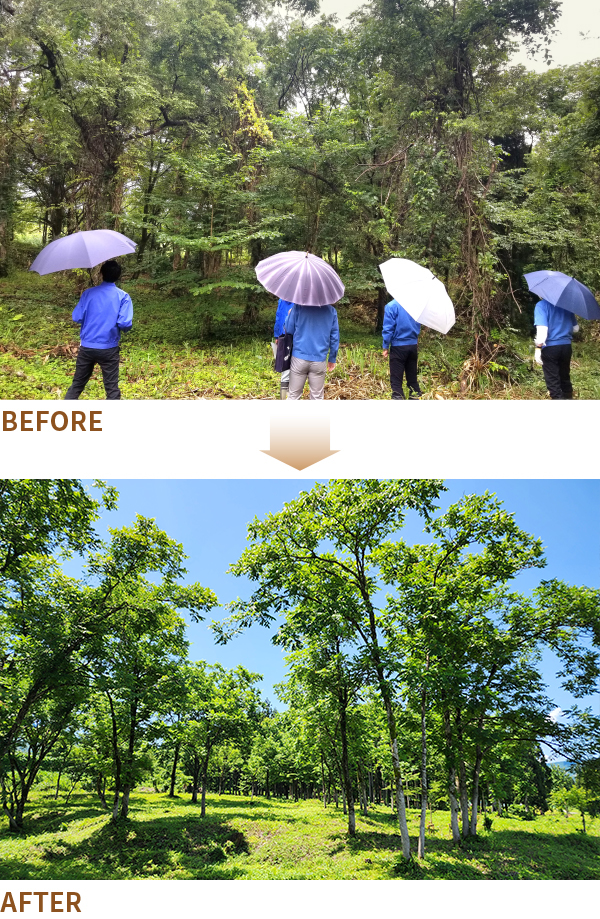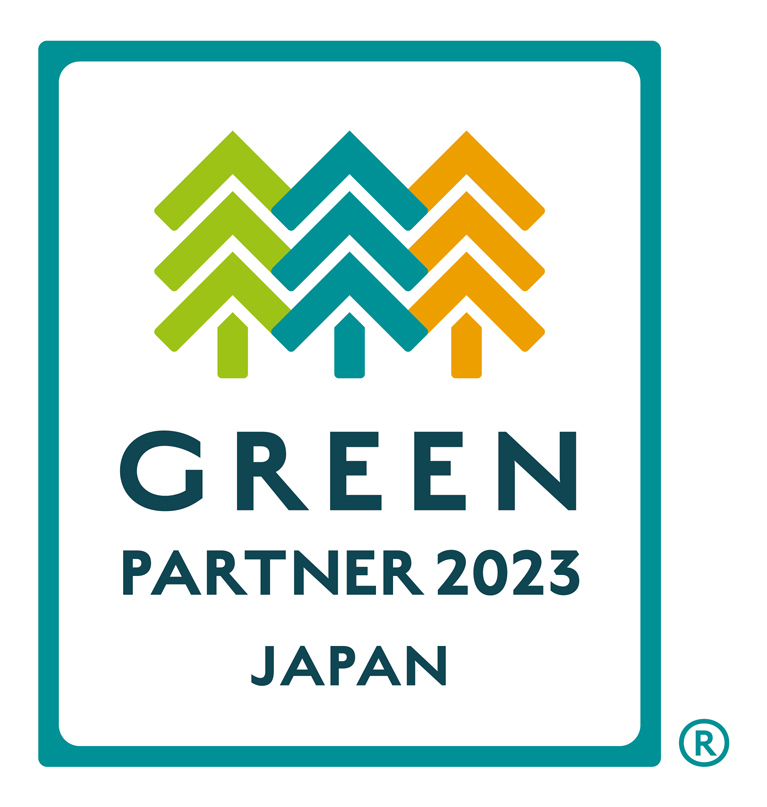Policies and Strategies
At the Yukiguni Maitake Group, we believe that it is essential for us to provide safe, secure, and high-quality products to our customers, to enhance value for our diverse stakeholders including our business partners, and to give consideration to the global environment, from the perspective of our corporate social responsibility.
The sawdust (wood chips) used as raw material for mushroom cultivation is mainly made from trees that have been cut down under forest improvement plans, such as old trees that have reached the harvesting stage and trees that have been thinned to grow healthy forests, and the Yukiguni-Maitake Group has indirectly contributed to the conservation and utilization of sustainable forest resources.
On the other hand, there is a concern that the number of forests that have fallen into disrepair due to lack of care is increasing, and that their original functions, such as water source recharge and prevention of mountain disasters, are not being fulfilled.
When the sustainability of forest resources is compromised, there are concerns about procurement failure and damage to corporate value.
For this reason, we will further enhance the sustainability of our business and contribute to resolving issues in local communities, by contributing to the conservation of forest resources on our own.
We have identified “procurement of raw materials and use of water resources in a sustainable way” as our materiality, and within this materiality, we will promote initiatives, such as the “Yukiguni Maitake Forest Creation Activities.”
Structure, Governance and Risk Management
For details, please see Sustainability Management Structure
Indicators and Targets
At the Yukiguni Maitake Group, has set the following indicators and targets to realize sustainable procurement of raw materials.
| Scope | Unit | FY2020 | FY2021 | FY2022 | Target | |
|---|---|---|---|---|---|---|
| Supplier management and on-site checks to ensure that sawdust procured does not lead to deforestation | non- consolidated |
- | 16 | 10 | 24 | *1 |
| Total amount of raw materials used for mushroom culture media | non- consolidated |
t | 61,618 | 60,463 | 61,048 | - |
| Percentage of thinned wood*2 used in the raw material sawdust (hardwoods, cedar) | non- consolidated |
% | 100 | 100 | 100 | - |
- *1. Sawdust suppliers and manufacturers: We shall conduct plant inspections at least once every two years in principle.
Post-logging sites of suppliers who do logging on their own: We shall conduct inspections once every five years in principle.
As for periods during which we do not conduct inspections, we shall confirm the current status of such sites through photographs and other means. - *2. Raw materials that do not lead to deforestation, such as thinned wood, lumber cut down for selective logging or land preparation, offcuts such as backboards, and sawdust generated as by-products.
Initiatives
Yukiguni Maitake Forest Creation Activities
In 2020, we executed an agreement with Minamiuonuma City, the Minamiuonuma Forest Union, and the Niigata Prefecture Minamiuonuma Regional Promotion Bureau regarding the forest creation activities, and have been conducting activities to promote the transformation of the devastated forest in Maiko, Minamiuonuma City, into a forest park where people and the forest can coexist in harmony.
Going forward, we will continue to engage in these activities in order to contribute to the resolution of issues in local communities and the realization of a sustainable society.

Initiatives to Conserve Forest Resources
1. Thinning
We strive to create an environment conducive to the growth of trees by thinning the forest on a periodic basis. Appropriate thinning allows adequate light to shine into the forest, making it easier for underbrush and other vegetation to flourish. As a result, it facilitates the forest functions such as water source recharge and sediment runoff prevention to work.
2. Planting
We are creating a mixed forest of coniferous trees and broadleaf trees, which resembles natural forests, by cutting down cedar trees which are coniferous trees, and planting broadleaf trees such as cherry trees and mountain maples instead. When diverse broadleaf trees grow on the ground surface, rainfall becomes less likely to reach the soil directly. As a result, fallen leaves cover the soil surface and accordingly sediment runoff is reduced. In addition, it also leads to conservation of forest ecosystems since the number of animals that use broadleaf trees as breeding grounds and feed on broadleaf trees increases.
Green Partner Certification
In 2023, through our activities to develop forests, our application to the “Forest x Decarbonization Challenge 2023,” newly established by the Forestry Agency, was accepted and we were certified as a “Green Partner 2023,” which is a company that contributes to decarbonization through the development of forests.

Activity Video “TeamECO Yukiguni Maitake Forest Maintenance”
Promote CSR procurement and local audits
For details, please see Supply Chain Management
